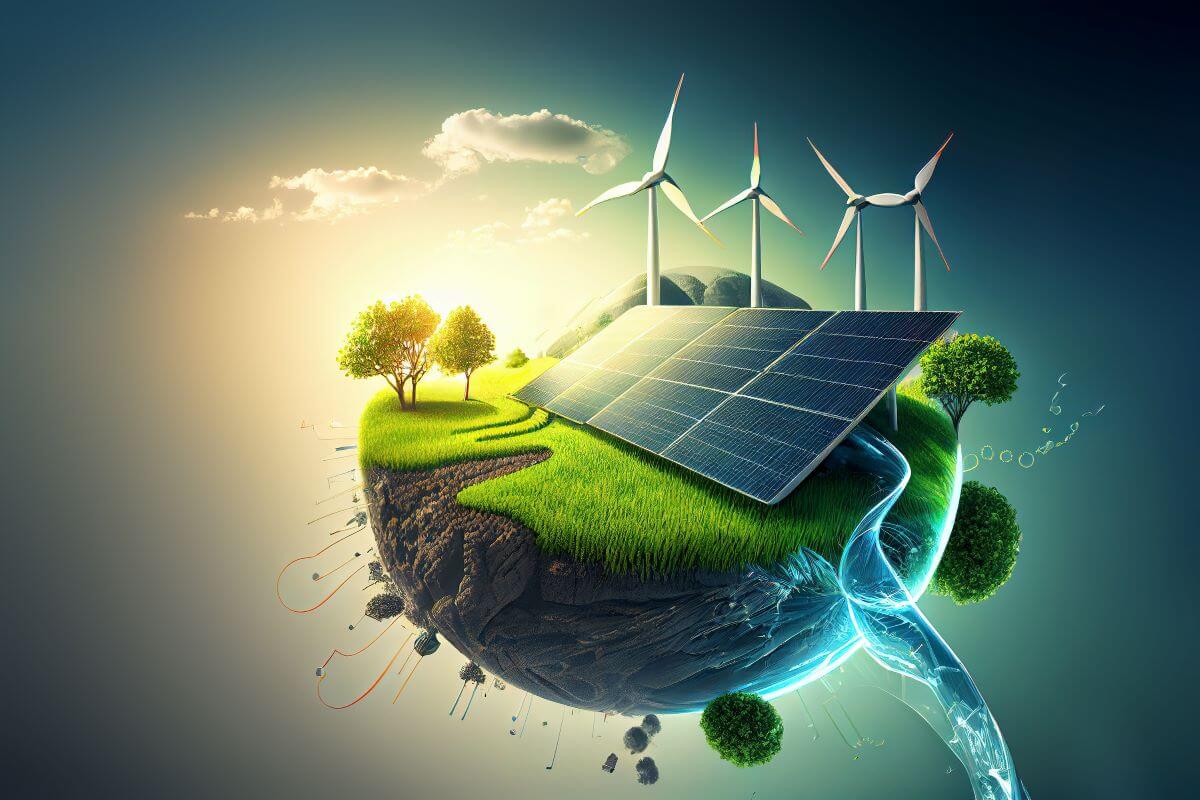In the face of climate change and environmental degradation, the adoption of sustainable energy solutions has become imperative for creating a greener, more resilient future. Sustainable energy solutions harness renewable resources such as sunlight, wind, water, and biomass to generate clean, reliable power while reducing greenhouse gas emissions and mitigating the impacts of climate change. In this blog post, we delve into the transformative potential of sustainable energy solutions and their role in shaping a more sustainable world.
Harnessing Renewable Resources
Sustainable energy solutions leverage the power of renewable resources to meet our energy needs in a sustainable manner. Unlike fossil fuels, which are finite and contribute to air pollution and climate change, renewable energy sources offer a clean, abundant alternative that can be harnessed indefinitely without depleting natural resources. From solar panels and wind turbines to hydroelectric dams and bioenergy plants, sustainable energy technologies provide scalable and adaptable solutions to power our homes, businesses, and communities while preserving the health of our planet for future generations.
Advantages of Sustainable Energy Solutions
Environmental Benefits
One of the key advantages of sustainable energy solutions is their environmental sustainability. By harnessing clean, renewable resources, these solutions help reduce greenhouse gas emissions, improve air quality, and mitigate the impacts of climate change. Additionally, sustainable energy technologies have a lower environmental footprint throughout their lifecycle, from resource extraction and manufacturing to operation and disposal, making them a preferred choice for environmentally conscious individuals and organizations.
Energy Security and Resilience
Sustainable energy solutions promote energy security and resilience by diversifying our energy sources and reducing reliance on imported fossil fuels. By generating electricity locally from renewable resources, communities and nations can enhance their energy independence, mitigate the risk of supply disruptions, and reduce vulnerability to fluctuating fuel prices and geopolitical instability. Additionally, decentralized energy systems and energy storage technologies enhance grid resilience and ensure reliable power supply, even during disasters and emergencies.
Economic Opportunities
The transition to sustainable energy solutions presents significant economic opportunities, driving job creation, investment, and economic growth. From manufacturing and installation to operation and maintenance, the sustainable energy sector supports a wide range of skilled and unskilled jobs, spanning across industries and regions. Moreover, by investing in renewable energy infrastructure and technologies, countries can stimulate innovation, attract investment, and enhance their competitiveness in the global marketplace, while also reducing reliance on costly imported fuels.
Implementing Sustainable Energy Solutions
Implementing sustainable energy solutions requires a concerted effort from governments, businesses, communities, and individuals. Policy support, financial incentives, and regulatory frameworks play a crucial role in incentivizing the adoption of renewable energy technologies and phasing out fossil fuels. Additionally, public awareness campaigns, education initiatives, and community engagement efforts help raise awareness about the benefits of sustainable energy and empower individuals and organizations to take action.
Advancing Renewable Technologies
Renewable energy technologies are continually evolving, driven by innovation and research. As we strive to maximize the potential of sustainable energy solutions, ongoing advancements in renewable technologies hold the key to unlocking new possibilities and overcoming existing challenges. Here are some notable developments shaping the future of renewable energy:
Solar Energy Innovations
Solar energy continues to be a frontrunner in the renewable energy landscape, with ongoing advancements in solar panel efficiency, durability, and affordability. Emerging technologies such as thin-film solar cells, perovskite solar cells, and bifacial solar panels promise to further enhance the performance and cost-effectiveness of solar energy systems, making them more accessible to a wider range of applications and environments.
Wind Power Enhancements
Wind power is another cornerstone of renewable energy, with continuous improvements in wind turbine design, materials, and efficiency. Offshore wind farms, in particular, offer vast potential for harnessing wind energy in coastal regions, where wind speeds are typically higher and more consistent. Additionally, advancements in turbine technology, such as larger rotor diameters and taller towers, enable wind farms to capture more energy and operate more efficiently, driving down costs and increasing reliability.
Energy Storage Breakthroughs
Energy storage is a critical component of sustainable energy solutions, enabling the integration of renewable energy into the grid and enhancing grid stability and resilience. Breakthroughs in battery technology, such as lithium-ion batteries, flow batteries, and solid-state batteries, are making energy storage more affordable, scalable, and efficient. Moreover, innovations in grid-scale storage solutions, such as pumped hydro storage, compressed air energy storage, and flywheel systems, offer flexible and cost-effective options for storing excess renewable energy and dispatching it when needed.
Smart Grid Integration
Smart grid technologies play a crucial role in optimizing the integration of renewable energy into the existing power grid, enhancing efficiency, reliability, and resilience. Advanced control systems, real-time monitoring, and predictive analytics enable utilities to manage renewable energy resources more effectively, balance supply and demand, and respond to grid fluctuations in real-time. Additionally, demand-side management programs, smart meters, and grid-connected appliances empower consumers to participate actively in energy conservation and load management, reducing energy consumption and costs.
Conclusion
In conclusion, sustainable energy solutions are essential for addressing the dual challenges of climate change and energy security, while also driving economic growth and promoting environmental sustainability. By harnessing the power of renewable resources, embracing innovative technologies, and fostering collaboration across sectors, we can create a cleaner, more resilient, and more prosperous future for generations to come. As we continue to advance towards a sustainable energy future, let us embrace the opportunities and benefits of sustainable energy solutions and work together to build a greener, more sustainable world for all.






